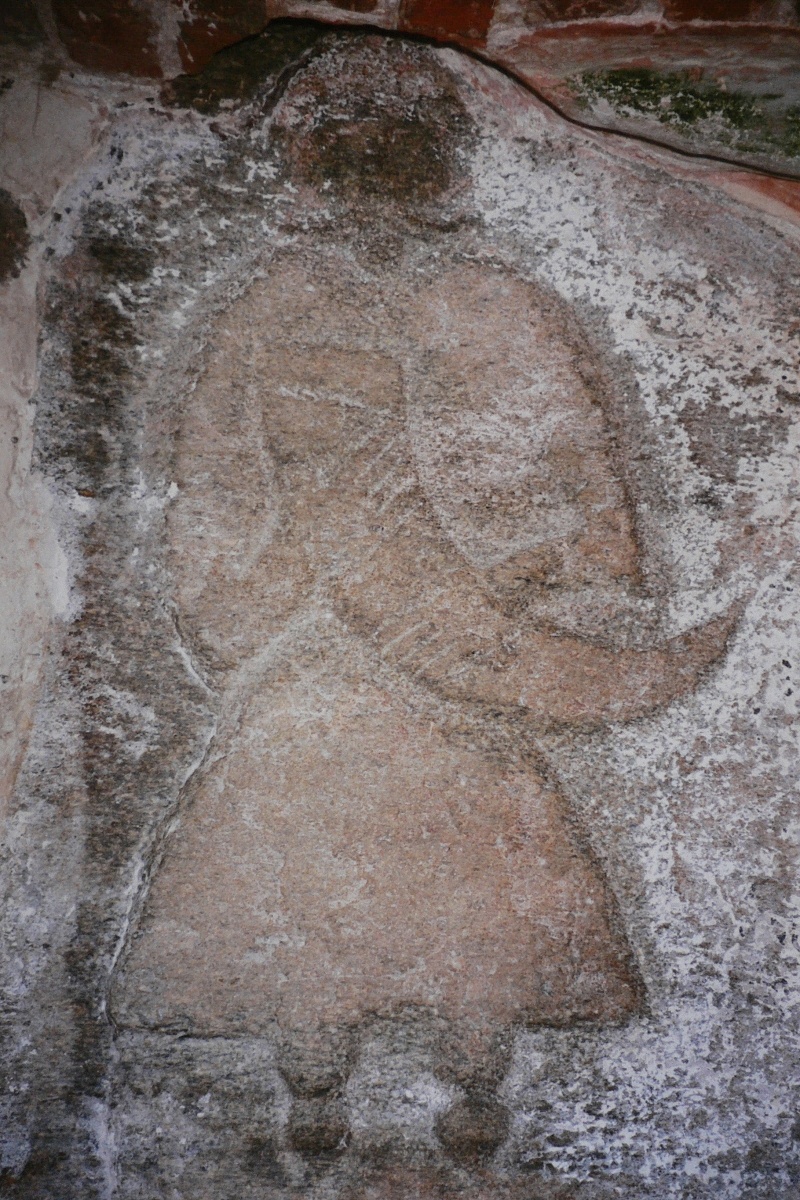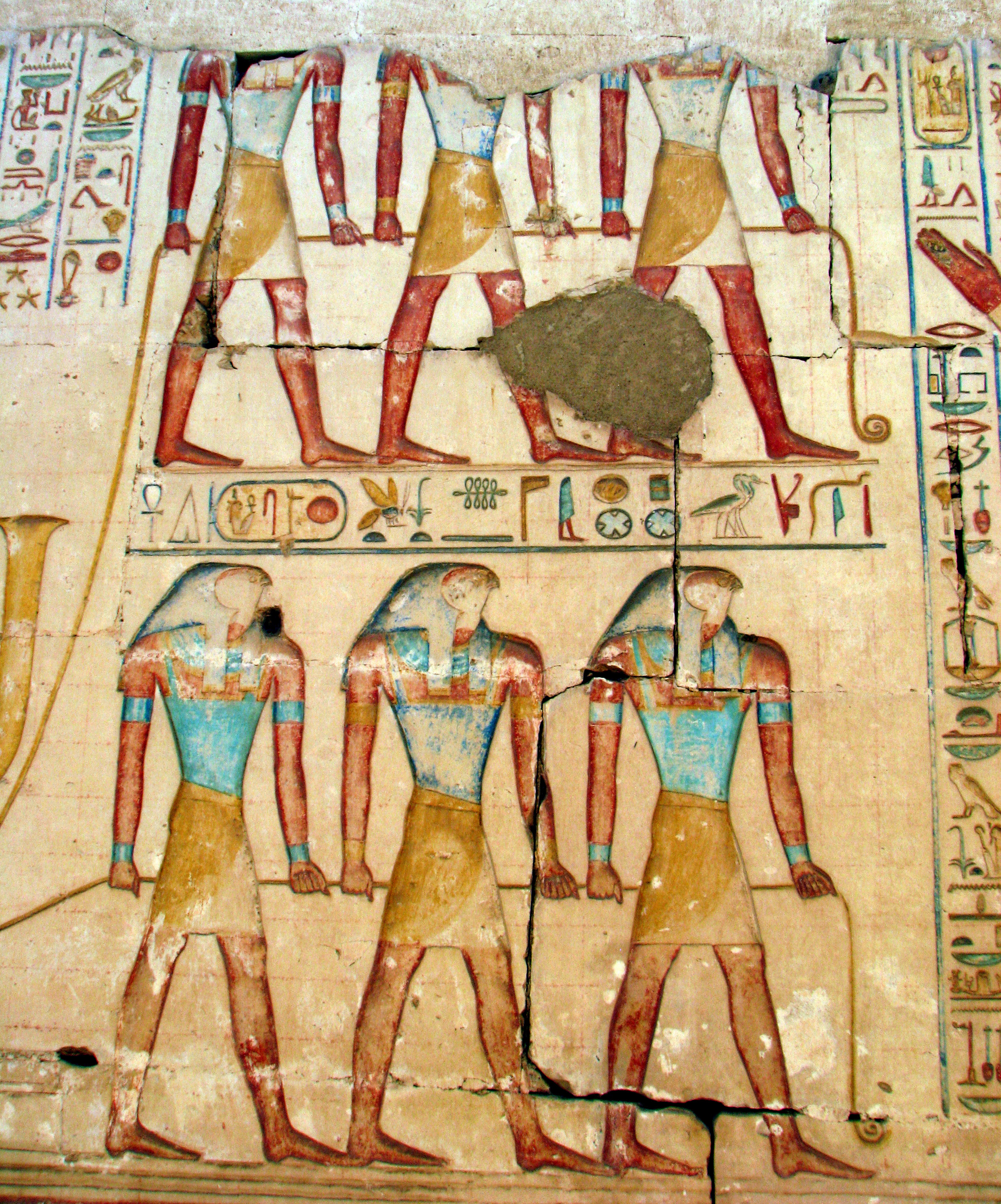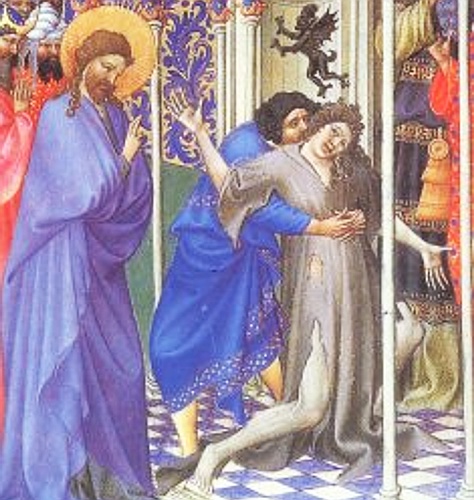|
Rusalka
In Slavic folklore, the rusalka (plural: rusalky/rusalki; ; pl, rusałka}) is a typically feminine entity, often malicious toward mankind and frequently associated with water, with counterparts in other parts of Europe, such as the French Melusine and the Germanic Nixie. Folklorists have proposed a variety of origins for the entity, including that they may originally stem from Slavic paganism, where they may have been seen as benevolent spirits. Rusalki appear in a variety of media in modern popular culture, particularly in Slavic language-speaking countries, where they frequently resemble the concept of the mermaid. In northern Russia, the rusalka was also known by various names such as the vodyanitsa (or vodyaniha/vodyantikha; russian: водяни́ца, водяни́ха, водянти́ха ; lit. "she from the water" or "the water maiden"), kupalka (russian: купа́лка; "bather"), shutovka (russian: шуто́вка; "joker", "jester" or "prankster") and loskotu ... [...More Info...] [...Related Items...] OR: [Wikipedia] [Google] [Baidu] |
Mermaid
In folklore, a mermaid is an aquatic creature with the head and upper body of a female human and the tail of a fish. Mermaids appear in the folklore of many cultures worldwide, including Europe, Asia, and Africa. Mermaids are sometimes associated with perilous events such as floods, storms, shipwrecks, and drownings. In other folk traditions (or sometimes within the same traditions), they can be benevolent or beneficent, bestowing boons or falling in love with humans. The male equivalent of the mermaid is the merman, also a familiar figure in folklore and heraldry. Although traditions about and sightings of mermen are less common than those of mermaids, they are generally assumed to co-exist with their female counterparts. The male and the female collectively are sometimes referred to as merfolk or merpeople. The Western concept of mermaids as beautiful, seductive singers may have been influenced by the Sirens of Greek mythology, which were originally half-birdlike, but ... [...More Info...] [...Related Items...] OR: [Wikipedia] [Google] [Baidu] |
Vodyanoy
In Slavic mythology, vodyanoy or vodyanoi ( rus, водяно́й, p=vədʲɪˈnoj; lit. ' efrom the water' or 'watery') is a water spirit. In Czech and Slovak fairy tales, it is called ''vodník'' (or in Germanized form: ), and it is considered to be the equivalent creature as the Wassermann or nix of German fairy tales. Vodyanoy is said to appear as a naked old man with a frog-like face, greenish beard, and long hair, with his body covered in algae and muck, usually covered in black fish scales; сonsequently, he is often dubbed "grandfather" or "forefather" by the local people. He has webbed paws instead of hands, a fish's tail, and eyes that burn like red-hot coals. He usually rides along his river on a half-sunken log, making loud splashes. Local drownings are said to be the work of the vodyanoy (or rusalkas). When angered, the vodyanoy breaks dams, washes down water mills, and drowns people and animals. Consequently, fishermen, millers, and also bee-keepers make sacrific ... [...More Info...] [...Related Items...] OR: [Wikipedia] [Google] [Baidu] |
Slavic Paganism
Slavic mythology or Slavic religion is the Religion, religious beliefs, myths, and ritual practices of the Slavs before Christianisation of the Slavs, Christianisation, which occurred at various stages between the 8th and the 13th century. The South Slavs, who likely settled in the Balkan Peninsula during the 6th–7th centuries AD, bordering with the Byzantine Empire to the south, came under the sphere of influence of Eastern Christianity, beginning with the creation of writing systems for Slavic languages (first Glagolitic, and then Cyrillic script) in 855 by the brothers Saints Cyril and Methodius and the adoption of Christianity in Bulgaria in 863. The East Slavs followed with the official adoption in 988 by Vladimir the Great of Kievan Rus'. The West Slavs, West Slavs' process of Christianization was more gradual and complicated. The Moravians accepted Christianity as early as 831, the Bohemian dukes followed in 845, Slovaks accepted Christianity somewhere between the years 8 ... [...More Info...] [...Related Items...] OR: [Wikipedia] [Google] [Baidu] |
Soul
In many religious and philosophical traditions, there is a belief that a soul is "the immaterial aspect or essence of a human being". Etymology The Modern English noun '':wikt:soul, soul'' is derived from Old English ''sāwol, sāwel''. The earliest attestations reported in the ''Oxford English Dictionary'' are from the 8th century. In King Alfred's translation of ''De Consolatione Philosophiae'', it is used to refer to the immaterial, spiritual, or thinking aspect of a person, as contrasted with the person's physical body; in the Vespasian Psalter 77.50, it means "life" or "animate existence". The Old English word is cognate with other historical Germanic languages, Germanic terms for the same idea, including Old Frisian ''sēle, sēl'' (which could also mean "salvation", or "solemn oath"), Gothic language, Gothic ''saiwala'', Old High German ''sēula, sēla'', Old Saxon ''sēola'', and Old Norse ''sāla''. Present-day cognates include Dutch ''ziel'' and German ''Seele''. Re ... [...More Info...] [...Related Items...] OR: [Wikipedia] [Google] [Baidu] |
Vladimir Propp
Vladimir Yakovlevich Propp (russian: Владимир Яковлевич Пропп; – 22 August 1970) was a Soviet folklorist and scholar who analysed the basic structural elements of Russian folk tales to identify their simplest irreducible structural units. Biography Vladimir Propp was born on 29 April 1895 in Saint Petersburg to an assimilated Russian family of German descent. His parents, Yakov Philippovich Propp and Anna-Elizaveta Fridrikhovna Propp (née Beisel), were Volga German wealthy peasants from Saratov Governorate. He attended Saint Petersburg University (1913–1918), majoring in Russian and German philology.Propp, Vladimir. "Introduction." ''Theory and History of Folklore.'' Ed. Anatoly Liberman. University of Minnesota: University of Minnesota Press, 1984. pg ix Upon graduation he taught Russian and German at a secondary school and then became a college teacher of German. His ''Morphology of the Folktale'' was published in Russian in 1928. Although i ... [...More Info...] [...Related Items...] OR: [Wikipedia] [Google] [Baidu] |
Pagan
Paganism (from classical Latin ''pāgānus'' "rural", "rustic", later "civilian") is a term first used in the fourth century by early Christians for people in the Roman Empire who practiced polytheism, or ethnic religions other than Judaism. In the time of the Roman empire, individuals fell into the pagan class either because they were increasingly rural and provincial relative to the Christian population, or because they were not ''Miles Christianus, milites Christi'' (soldiers of Christ).J. J. O'Donnell (1977)''Paganus'': Evolution and Use ''Classical Folia'', 31: 163–69. Alternative terms used in Christian texts were ''Greeks, hellene'', ''gentile'', and ''wikt:heathen, heathen''. Ritual sacrifice was an integral part of ancient Classical mythology, Graeco-Roman religion and was regarded as an indication of whether a person was pagan or Christian. Paganism has broadly connoted the "Civil religion, religion of the peasantry". During and after the Middle Ages, the term ''paga ... [...More Info...] [...Related Items...] OR: [Wikipedia] [Google] [Baidu] |
Unclean Spirit
In English translations of the Bible, unclean spirit is a common rendering of Greek ''pneuma akatharton'' (πνεῦμα ἀκάθαρτον; plural ''pneumata akatharta'' (πνεύματα ἀκάθαρτα)), which in its single occurrence in the Septuagint translates Hebrew ' (). The Greek term appears 21 times in the New Testament in the context of demonic possession. It is also translated into English as spirit of impurity or more loosely as "evil spirit." The Latin equivalent is ''spiritus immundus''. The association of physical and spiritual cleanliness is, if not universal, widespread and continues into the 21st century: "To be virtuous is to be physically clean and free from the impurity that is sin," notes an article in ''Scientific American'' published 10 March 2009. Some scholarship seeks to differentiate between "unclean spirit" and "evil spirit" ('' pneuma ponêron'') or "demon" ('' daimonion''). The concept of ''pneuma'' In the Christian scriptures, the word ... [...More Info...] [...Related Items...] OR: [Wikipedia] [Google] [Baidu] |
Dmitry Zelenin (ethnographer)
Dmitry Konstantinovich Zelenin (russian: Дми́трий Константи́нович Зеле́нин; November 2, 1878 – August 31, 1954) was a Russian and Soviet linguist and ethnographer. He was born in an Udmurt village near Sarapul, where his father was a parish clerk. He attended the Vyatka seminary and the Dorpat University. As of 1915, he read lectures on Slavic dialects at the Petrograd University. He argued that the East Slavs comprise four distinct branches (North Russians, South Russians, Little Russians and White Russians) and outlined some subtle differences between East Slavic dialects. In the early 20th century, Zelenin collected fairy tales and chastushkas in his native region and the Northern Urals. This collection of folk tales was extensively used by his disciple Vladimir Propp. He was also the first to explore the concept of " unclean dead" in the Slavic folklore. In 1927, Max Vasmer published Zelenin's magnum opus, ''Russische (Ostslavische) Volksku ... [...More Info...] [...Related Items...] OR: [Wikipedia] [Google] [Baidu] |
Iwan Nikolajewitsch Kramskoj 002
An iwan ( fa, ایوان , ar, إيوان , also spelled ivan) is a rectangular hall or space, usually vaulted, walled on three sides, with one end entirely open. The formal gateway to the iwan is called , a Persian term for a portal projecting from the facade of a building, usually decorated with calligraphy bands, glazed tilework, and geometric designs. Since the definition allows for some interpretation, the overall forms and characteristics can vary greatly in terms of scale, material, or decoration. Iwans are most commonly associated with Islamic architecture; however, the form is Iranian in origin and was invented much earlier and fully developed in Mesopotamia around the third century CE, during the Parthian period of Persia. Etymology ''Iwan'' is a Persian word which was subsequently borrowed into other languages such as Arabic and Turkish. Its etymology is unclear. A theory by scholars like Ernst Herzfeld and W. B. Henning proposed that the root of this term is O ... [...More Info...] [...Related Items...] OR: [Wikipedia] [Google] [Baidu] |
Undead
The undead are beings in mythology, legend, or fiction that are deceased but behave as if alive. Most commonly the term refers to corporeal forms of formerly-alive humans, such as mummies, vampires, and zombies, who have been reanimated by supernatural means, technology, or disease. In some cases (for example in Dungeons & Dragons) the term also includes incorporeal forms of the dead, such as ghosts. The undead are featured in the belief systems of most cultures, and appear in many works of fantasy and horror fiction. The term is also occasionally used for real-life attempts to resurrect the dead with science and technology, from early experiments like Robert E. Cornish's to future sciences such as "chemical brain preservation" and " cryonics." History Bram Stoker considered using the title, ''The Un-Dead'', for his novel '' Dracula'' (1897), and use of the term in the novel is mostly responsible for the modern sense of the word. The word does appear in English before ... [...More Info...] [...Related Items...] OR: [Wikipedia] [Google] [Baidu] |
Explanatory Dictionary Of The Living Great Russian Language
The ''Explanatory Dictionary of the Living Great Russian Language'' (russian: link=no, Толко́вый слова́рь живо́го великору́сского языка́), commonly known as ''Dal's Explanatory Dictionary'' (russian: Толко́вый слова́рь Да́ля, links=no), is a major explanatory dictionary of the Russian language. It contains about 220,000 words and 30,000 proverbs (3rd edition). It was collected, edited and published by academician Vladimir Ivanovich Dal (russian: Влади́мир Ива́нович Даль, links=no; 1801–1872), one of the most prominent Russian language lexicographers and folklore collectors of the 19th century. ''Dal's Explanatory Dictionary'' of the Great Russian language was the only substantial dictionary printed repeatedly (1935, 1955) in the Soviet Union in compliance with the old rules of spelling and alphabet, which were repealed in 1918. History and features The author shows his specific under ... [...More Info...] [...Related Items...] OR: [Wikipedia] [Google] [Baidu] |





_b_016.jpg)

.jpg)

